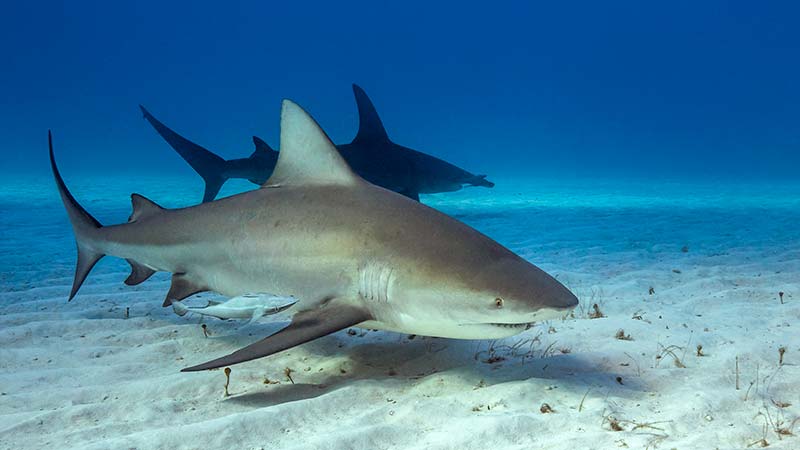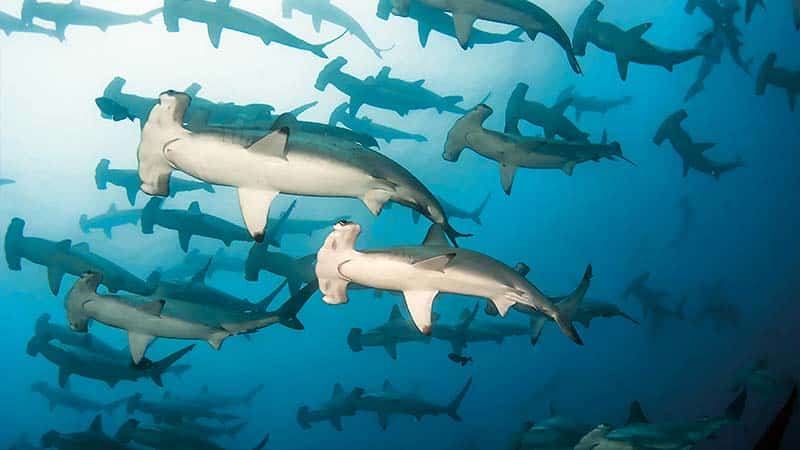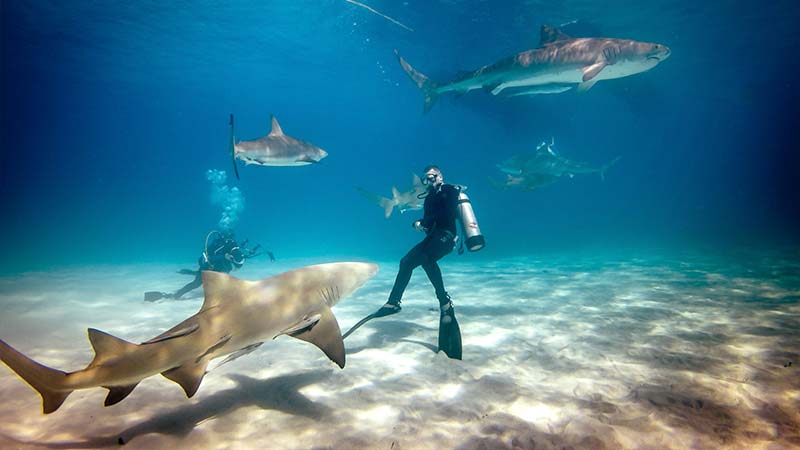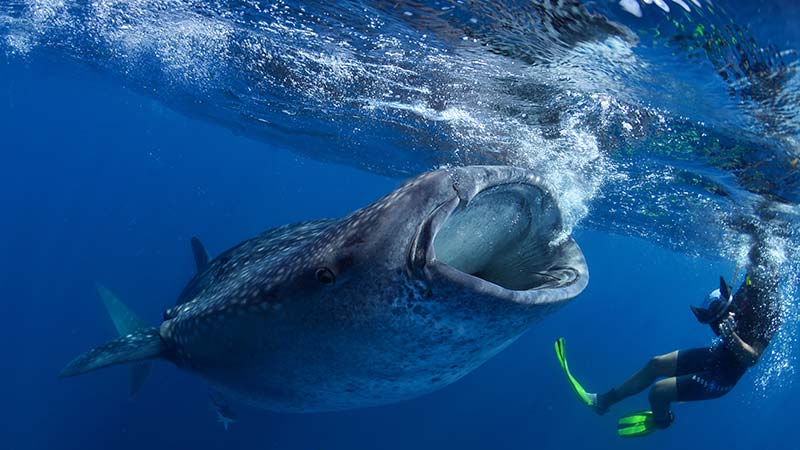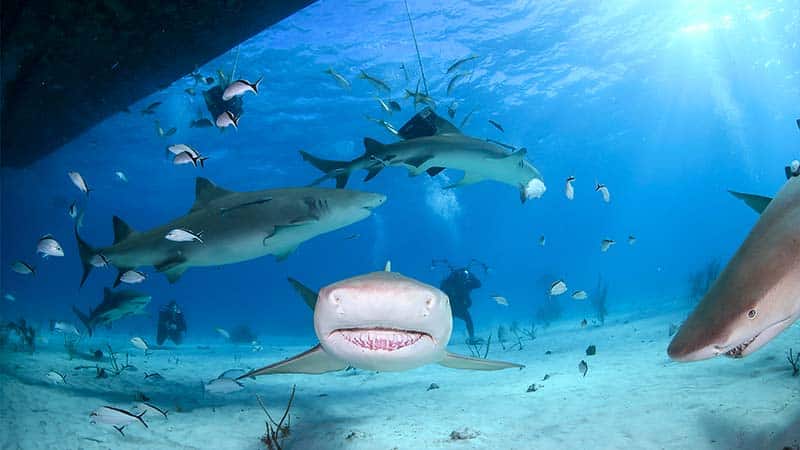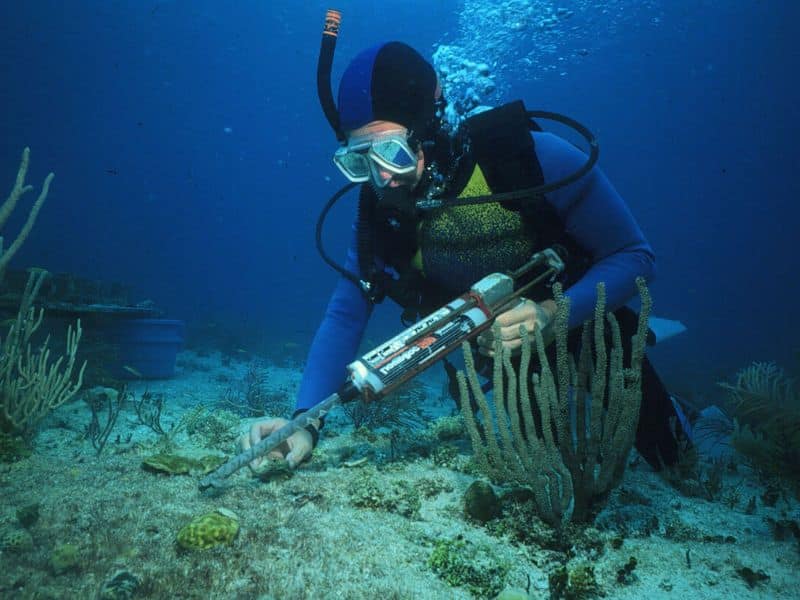6. Is Feeding the Sharks Allowed During Shark Diving?
Yes, it is allowed, at least in Mexico, but not all operators agree with these practices, much less Dressel Divers.
But let’s first explain the different shark baiting practices.
“Chumming”. This involves spreading small pieces of food and blood into the water to attract sharks to a specific area, which sometimes extends for miles.
Supplying sustenance by way of different techniques to sharks either directly or indirectly is “feeding”
The first one is used in white shark cage diving mainly, and the second one is with other sharks, such as tiger, limon, or bull sharks.
Although this may be a way to get closer to sharks, generally shy animals, for observation, they are also open to criticism.
Some voices in the community argue that baiting sharks can be dangerous as it can lead to sharks associating humans with food and becoming more aggressive toward them.
At Dressel Divers, we believe that a responsible approach to diving with sharks is the best way. Instead of baiting, we track and follow groups of sharks we know are in the area. This is the procedure we follow for our Bull Shark Dive and Whale Shark Snorkel Excursion. This practice is more responsible.
At Dressel Divers, we strongly believe that diving with sharks is an opportunity to raise awareness and support conservation efforts. However, we understand that the objective does not justify the means. We contribute to respectful, responsible diving with sharks and with the best practices.
7. What Should I Do If I Encounter a Shark While Diving?
Time to learn how to handle sharks face-to-face! First things first, take a deep breath and repeat after me: “Don’t panic, don’t panic, don’t panic.”
Sharks are very sensitive creatures and can sense changes in your body chemistry and hear vibrations. So, if you start to panic, your heart will race, your temperature will rise and you’ll produce more adrenaline, which could attract the shark. Just keep still close to the sea bottom in a horizontal position.
Remember, just because a shark disappears from sight, doesn’t mean it’s gone! These creatures can pop up quickly, especially tiger sharks.
When you see a shark, don’t stay on the surface or in the water column. Swim directly to the sandy bottom or reef. When your dive is complete, get out of the water as quickly as diving procedures allow.
Don’t follow a shark, give them plenty of space. Pursuing them from behind could cause them to turn and see you as a threat.
Always follow local guidelines for diving with sharks.
Remember, we’re guests in the ocean and should treat all sea life with respect. Don’t stare down a shark or flash a camera in its face move slowly and stay close to the reef or sea bed.
Stay safe and have fun on your next shark dive!




